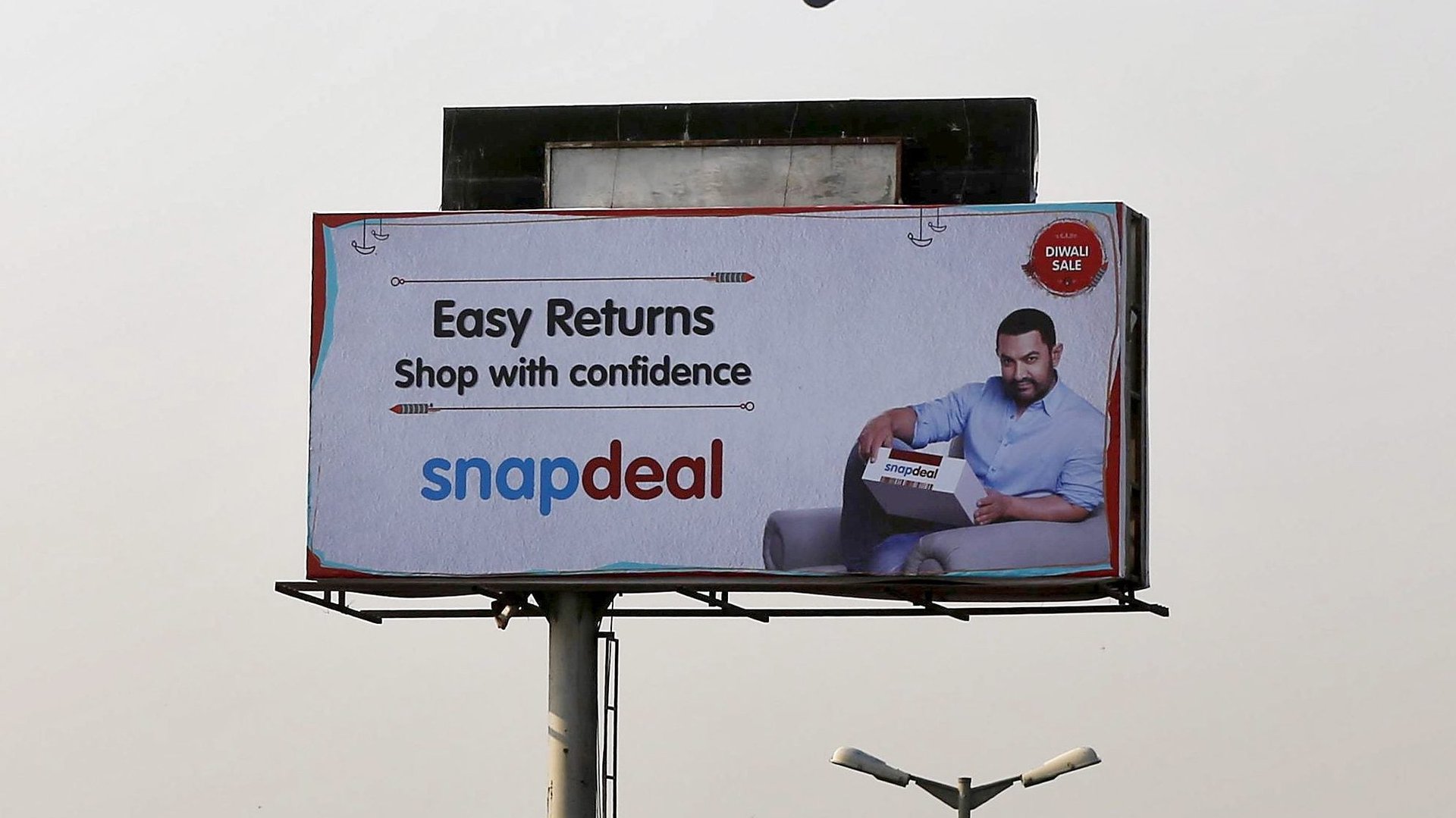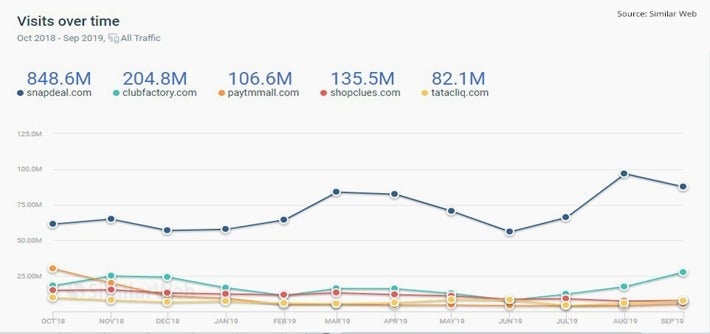Snapdeal’s comeback strategy seems to be paying off
A few years ago, Indian e-commerce marketplace Snapdeal was in shambles—but not anymore.


A few years ago, Indian e-commerce marketplace Snapdeal was in shambles—but not anymore.
Over the past two years, the traffic to Snapdeal’s web and mobile sites has more than tripled, according to data from market intelligence firm SimilarWeb. In the last year alone, its traffic has grown 61%. “Snapdeal’s steady focus on the mass segment of the e-commerce market in India has led to a sharp increase in its reach and popularity across the country,” SimilarWeb said in a release on Oct. 21.
The return of Snapdeal
Until early 2017, Snapdeal was India’s third largest e-commerce site. However, bogged down by tough competition from Amazon India and Flipkart, as well as the entry of myriad smaller vertical players, Snapdeal nearly went bust later that year.
In July 2017, after it shelved talks for a $950 million merger with rival Flipkart, the company, led by Kunal Bahl and Rohit Bansal, announced a fresh strategy called Snapdeal 2.0. As part of the revival plan, the company spun off and sold several businesses that were dragging it down, including warehouse management firm Unicommerce eSolutions, wallet business Freecharge, and logistics arm, Vulcan Express. Snapdeal also fired employees, and took other cut costs measurers to get back on track.
The improvement in performance is visible in Snapdeal’s financial metrics as well.
In June 2018, Bahl announced Snapdeal was cash positive. In the financial year ending March 2018, Snapdeal’s consolidated revenues grew by 73% from Rs536 crore to Rs925 crore ($76 million to $130 million). During the same period, it also narrowed its losses by 71% from Rs611 crore to Rs186 crore.
As per a recent tweet put by Snapdeal CEO Bahl, the company saw its highest-ever monthly transacting users in September 2019.
Snapdeal, which follows a horizontal e-commerce model, beats the next biggest player, China’s fashion e-commerce site ClubFactory, by over four times with 848 million visits in the last 12 months. (SimilarWeb did not include India’s two largest e-commerce players, Amazon and Flipkart, in the chart below.)

Plus, in the last two years, Snapdeal has added over 60,000 new sellers who have brought with them over 50 million new listings, the nine-year-old, New Delhi-based company said. The platform now has over half a million registered sellers, who have more than 200 million listings on the marketplace.
Posting an impressive performance, “Snapdeal has established itself as a strong #3 in the Indian market, with a leadership position in the Bharat-focused value segment,” SimilarWeb said.
Go small to go big
Urban, tech-savvy, metro-dwellers aren’t Indian e-commerce’s only hope. Two-thirds of the country’s population may live in rural areas but with increasing internet and smartphone penetration, they are becoming ardent online shoppers, too.
“Consistent with its focus on the value segment, more than 90% of Snapdeal’s users come from the small towns and cities of India,” SimilarWeb noted.
This year’s Diwali sales are a testament. In the first week of October, Snapdeal posted a massive growth of 52% over last year’s festive sales volumes. First time users on the platform more than doubled from the last Diwali season, Snapdeal claimed. And a whopping nine out of every 10 orders received on Snapdeal were from non-metro towns across India. In cities like Nagpur, Surat, Vijayawada, Chandigarh, Panaji, Jamshedpur, Shimla, and Guwahati, orders surged at least four-fold over the previous year.